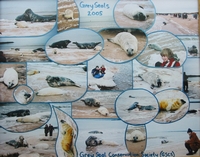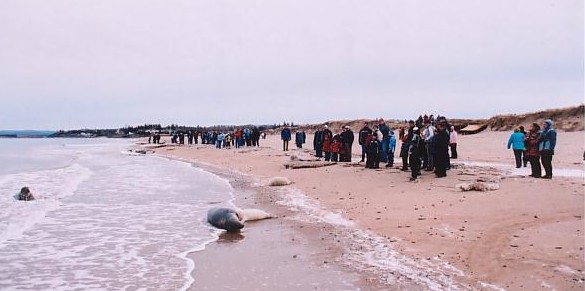The
following images are just a few of the pups born on Melmerby Beach this
year....the primordial sea's is where all life first began - it is
somewhat reassuring to witness, that even with today's continued assault,
disrespect and ignorance towards oceanic life, we have not yet destroyed
the marine ecosystem to the point where these types of events stop occurring.
In an already "ill ocean" (see also:The
Starving Ocean) "deprived
of vital oxygen" - this calling by (DFO) for a "grey seal
harvest"...when we accommodate the short term goals of special
interest groups, we carelessly threaten the "ecological equilibrium"
of all life (terrestrial and aquatic)...by continuously exploiting marine
mammals - our future hangs precariously in the balance.

(click
on image)
(GSCS)
Collage, Melmerby
Beach 2005
To
paraphrase poet John Masefield
"
I must go down to the sea again, to the sea and the ice and the seals-specifically,
the ice of the Gulf of St. Lawrence where...the cutest of all seal pups
are born, those whose dark appealing eyes once moved a world to pity..."

(GSCS)
invites all "artists" and "photographers"
to submit their "grey
seal"
pictures...
-(click on image to enlarge)-
|


